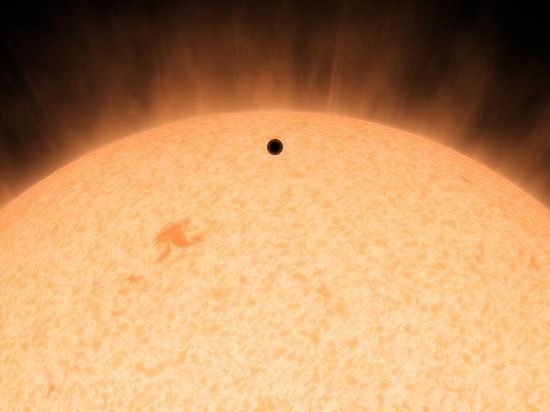The closest to us Earth-like planet is only 21 light-year from the sun
Today, at 01:04, Views: 2914
The Planet is a difficult to pronounce name HD 219134b orbits the star Gliese 892 in the constellation Cassiopeia. The find particularly disturbing the fact that the star-owner of the exoplanet can be seen with the naked even with the surface of the Earth.

Photo: nasa.gov
An exciting discovery, scientists have made a telescope Spitzer, after the discovery of the press service of NASA.
In the department stressed that Today, this distance to the nearest extrasolar planets is closest to the Earth.
“Most of the known planets are hundreds of light years away. The planet is practically our neighbor,” – said the astronomer, and one of the authors of the study, Lars Buchchave from Harvard-Smithsonian Center for Astrophysics.
Another specialist – Laboratory NASA representative Michael Werner admitted that discovered planet HD 219134b will be one of the most studied in the next few decades.
“exoplanets Transit worth their weight in gold, because we can describe a variety of settings,” – he added.
According to the mass of a planet discovered is about 4.5 times, and size – 1, 6 times the size of Earth. It clarifies Tass, comparison of weight and size it possible to calculate the density of matter: 6 grams per cubic centimeter, which confirms that it belongs to the terrestrial planets.
Scientists have noted with regret that HD 219134b is rotating too close to its star, so the possibility of life on her doubts.
By the way, this exoplanet was discovered a few years ago with a spectrograph on the telescope Galileo, but the data were carrying only approximate information, because then the research method was used gravitational microlensing. Today, thanks to the latest technology, using Spitzer’s scientists were able to obtain more accurate data on the size and structure of the planet.
The planet HD 219134b is a transit, it means that it is located so that we can observe with telescopes as it passes between us and its star. This allowed the scientists to clarify its size, and in the future will enable to find out whether the planet atmosphere and, if so, to investigate its composition.
Let’s remind, the other day it became known that the experts from NASA via superstrong orbital telescope Hubble saw in space science previously unknown planet in the constellation Cygnus. Kepler 452b, as the planet called, is located 1,400 light-years from Earth.
Read the MC: “The planet Kepler-186f may be a living relative of the Earth”
No comments:
Post a Comment